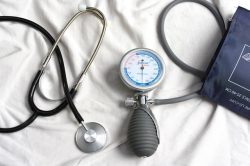Did you know that your doctor can send you to the pharmacy with a prescription for an antidepressant, with the goal of helping you stop smoking? Hold on, wait a minute… what? While the average consumer may not be aware of it, off-label use is very common, with up to one-fifth of all drugs prescribed as such according to the April 3, 2008 New England Journal of Medicine. Some of the most common off-label drug uses include the areas of cardiac, anticonvulsants, obstetrics and cancer medicine. Off-label prescriptions occur most often with older, generic medicines that have revealed themselves over time to alleviate additional symptoms or conditions such as:
- Anti-seizure drugs to treat migraines, depression, nerve pain
- Antipsychotics to treat Alzheimer’s Disease, autism, dementia, Attention Deficit Hyperactivity Disorder (ADHD)
- Antidepressants to treat chronic pain, ADHD, biopolar disorder
- Antihistamines to treat colds, asthma, ear infection symptoms, as sleep aids
In women’s health, perhaps because many drugs are not designed specifically for women, off-label prescriptions are common. A study published in Archives of Internal Medicine revealed that women received more off-label drugs than men (11.8% vs 9.7%), and was attributed to women being more likely to be treated for problems such as anxiety, nocturnal leg pain, and insomnia, and off-label prescribing is common for these conditions.
Oral contraceptives are prescribed as the first line of treatment for a range of conditions beyond birth control and for which these medications were not approved. Currently, Bayer, the makers of the Yasmin line of birth control, is facing lawsuits for marketing these drugs for lifestyle purposes, PMS and other ailments for which there were no data and the drugs were not approved.
In obstetrics, terbutaline, indomethacin, nefidepine and magnesium sulfate are medications that have been used off-label for years to halt pre-term contractions. None has strong data supporting their efficacy or safety, and this stems from pregnant women being routinely excluded from studies. Thus, most drug treatment during pregnancy is off-label. According to a June 1993 article in Obstetrics and Gynecology, reasons for such off-label use during pregnancy include:
- Prevention of repetitive abortion
- Inhibition of premature labor
- Reduction of fetal or neonatal infection
- Reduction in development of pre-eclampsia and its complications
- Ripening of the cervix or induction of labor
What’s the difference between FDA approved labels and non-approved off-labels?
One of the FDA’s primary roles is approving the labeling on a drug; approving what can and cannot be said about the medication. Once the FDA has approved that a drug works and is safe, it works closely with the drug manufacturer to create the drug label, which is a detailed report of specific information about the drug. The FDA-approved drug label is provided to all health professionals who prescribe or sell the drug, and gives information about the drug, its approved doses and instructions on appropriate administration to treat the medical condition(s) for which it was approved.
“Off-label” use is when the drug is used differently from what its label states. This can be when the drug is used for a different disease or medical condition, given in a different way (such as injected versus orally) or given in a different dose than in the approved label. Off-label use is also called “non-approved” or “unapproved” use of a drug, which is not regulated, but is legal in the U.S. and many other countries.
It is legal for doctors to prescribe drugs off-label, but it is not legal for drug companies to market the drug for off-label use. It is important to note that off-label marketing is very different from off-label use, and drug companies can be fined if they promote drugs for uses that have not been approved by the FDA. .
My doctor has prescribed a medication for me – what should I do?
As always it is our responsibility, as patients to do our homework when it comes to our health and wellness. Here are some tips before venturing off on the off-label trail:
- Ask your doctor if what they have prescribed is for an approved use, and then verify that information with your pharmacist.
- Go to the U.S. National Library of Medicine National Institutes of Health’s DailyMed site and search for the drug you are considering taking. Click on the “Indications & Usage” tab to see if your condition is listed.
- If the drug is for off-label use, ask your doctor if there is existing scientific support for your specific condition.
- Ask your doctor for the reason why they believe the drug will work better off-label than approved drugs.
- Check that your health insurer covers payments for off-label use as some may require evidence of effectiveness or failure with conventional treatments. This is most often the case with expensive drugs.
Check your medicine cabinet now. Have you already gone off on the off-label trail without knowing it?














